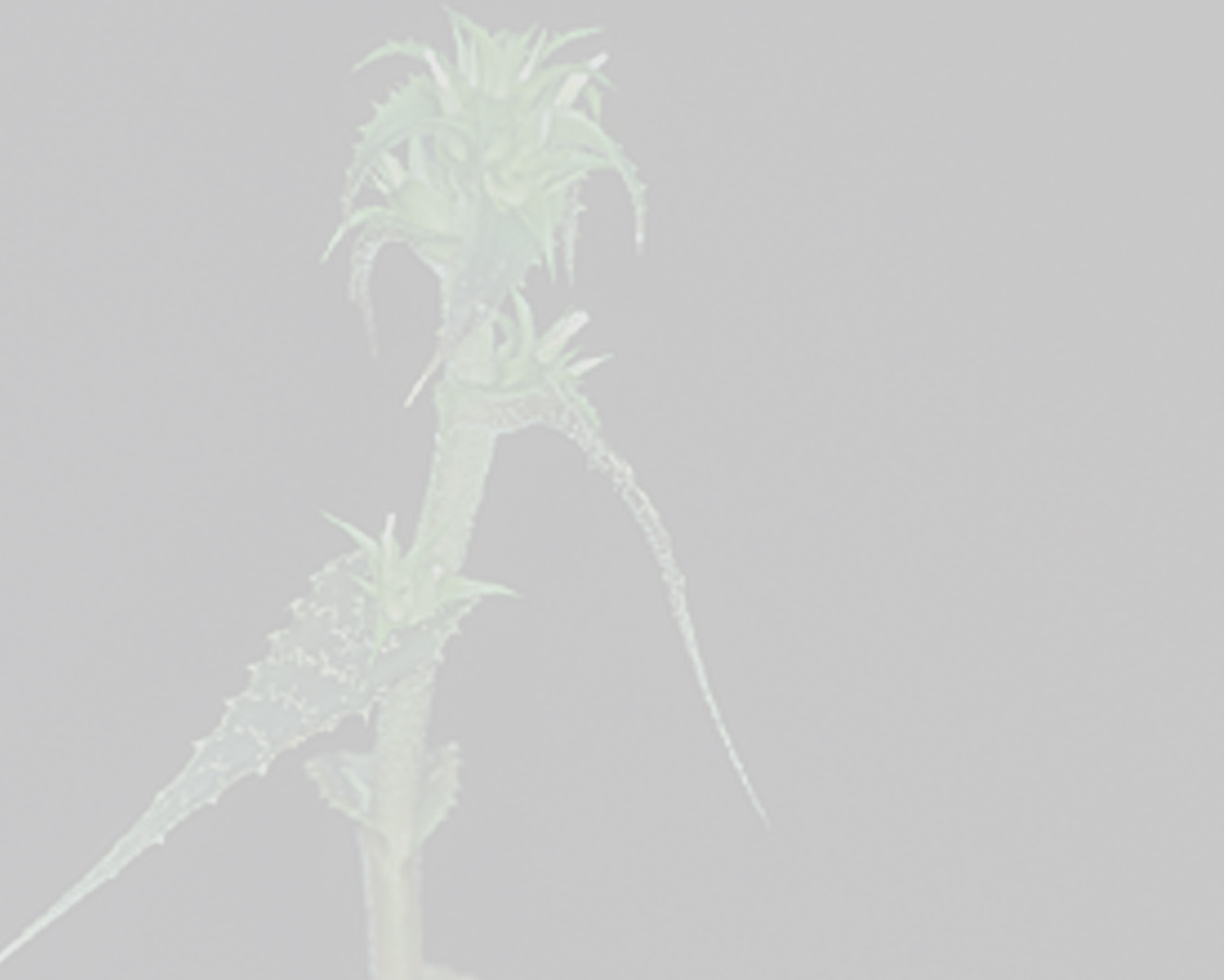


plant terrestrial, long caulescent, flowering 30–60 cm tall, propagating by elongated shoots developed near the base of the inflorescence. leaves 20–27 in number, thin in texture except for a thicker median zone mainly toward the base, spreading-recurved, more or less equally arranged along the stem, forming a subdense rosette; sheath trapeziform, 2 × 3.5 cm, pale green, glabrescent, densely spinulose; blade narrowly lanceolate, long attenuate and caudate, 17–27 × 1.8–2.4 cm, green, concolor, glabrescent to glabrous, opaque, margins undulate mainly toward the base, densely spinulose; spines pale green, the basal ones narrowly triangular, 1–3 mm long, 2–4 mm apart, spreading to slightly antrorse, the upper ones triangular, 0.2–0.3 mm long, 1–3 mm apart, antrorse. inflorescence sessile, 3.5–5 cm long, fasciculate compound at the base and unbranched toward the apex; primary bracts foliaceous, spreading-recurved, many times exceeding the fascicles; fascicles 1–2 in number, densely aggregated, 30–32 × 14–16 mm (excluding the petals), ca 7 mm thick, 2–4-flowered, stipe inconspicuous, stout, ca 5 mm long; floral bracts in the fascicles triangular, acuminate-caudate, membranaceous, green toward the apex, hyaline near the base, glabrous, nerved, slightly shorter than the sepals, alate-carinate (the outer ones) to obtusely if at all carinate (the inner ones), 20–26 × 14–15 mm, margins entire to spinulose at the apex; floral bracts* of the unbranched apical part of the inflorescence subfoliaceous, many times exceeding (basal ones) to slightly shorter (apical ones) than the flowers (including the petals). flowers all perfect, sessile, 42–55 mm long, fragrant; sepals 20–27 × 4–5 mm, sublinear-lanceolate to narrowly ovate-lanceolate, acuminate-caudate, connate at the base for 3–7 mm, green but drying dark castaneous soon after anthesis, glabrous, thin in texture, the adaxial ones alate-carinate with the keel continuating on the ovary, the abaxial one obtusely if at all carinate; petals broadly spathulate from a very narrow base, 35–44 × 15–20 mm, free, greenish-white toward the base, rose-lilac to lilac-purple toward the apex, the blades suborbicular, broadly acute, spreading at anthesis, at base with 2 longitudinal callosities equaling to exceeding the antepepalous filaments and 2 appendages; petals* appendages ca 2.5 mm above the base, thick, cupuliform with downwardly curved margins, margins minutely and obtusely crenulate. stamens deeply included and not visible; filament the antepetalous ones 4–6 mm long, adnate to the petals for ca 1.5 mm, the antesepalous ones 11–14 mm long, free; anther 1.5–2 mm long, oblong, dorsifixed at ca 1/3 from the base, base bilobed, apex obtuse or minutely apiculate; pollen ellipsoid, ca 36 μm, sulcate, sulcus narrow, covered by small exine islands, with margins weakly defined, exine reticulate, muri narrowed. pistil: style slightly exeeding the antepetalous stamens and distinctly shorter than the antesepalous ones, white; stigma conduplicate-spiral, white, with elongated densely papillose blades; ovary 5–7 mm long, 5–8 mm in diameter at the apex, trigonous, white, glabrous; epigynous tube lacking; ovules numerous, obtuse; placentation median to apical. fruits subglobose, whitish, ca 8 × 7 mm; seeds numerous, narrowly ovoid to fusiform, ca 2 × 0.7–1 mm, slightly to distinctly curved, dark castaneous.Edited from (28-04-2015): Leme 2015a. Two new species of Orthophytum (Bromeliaceae: Bromelioideae) from Minas Gerais, Brazil .